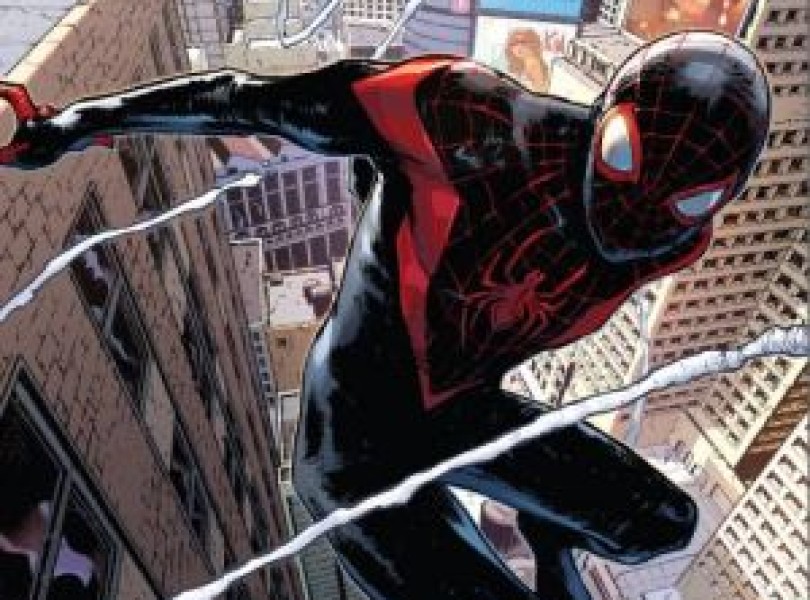New home, same Ultimate Spider-Man.
Brian Michael Bendis has been the steward of the Ultimate Spider-Man franchise from the very beginning and through its many relaunches. Even the death of the Ultimate Universe isn’t enough to bring an end to his 15-year run. With his latest ongoing series, Miles Morales has found a new home in the reborn Marvel Universe. Even better, the adjective-less Spider-Man reunited Bendis with Miles Morales co-creator Sara Pichelli. The result is a comic that looks and feels like classic Ultimate Spider-Man.
There’s a very back-to-basics approach with this first issue as Bendis and Pichelli explore Miles’ current status quo. Those turned off by Peter Parker’s recent lifestyle changes will be happy to know this is a book that focuses on the classic Spider-Man problems. Miles struggles to juggle his high school responsibilities with his superhero activities, all the while trying to keep his parents off his back. It’s enough to wonder if Marvel has too many “Teen Spider-Person” books on the market right now, between this series, Spidey, Silk and Spider-Gwen. In any case, what sets this book apart the strong supporting cast. Miles is a great character, but he really needs his friendship with Ganke and his strained dynamic with his parents to reach his full potential. Luckily, his entire supporting cast made the jump from the Ultimate Universe, too.

While Miles’ world doesn’t feel especially different in this issue (apart from the fact that his mother is alive again), Pichelli does a fantastic job of reflecting the character’s physical growth. She paints Miles as a taller, slightly older and more confident figure. Many artists struggle to convincingly render teenagers at all, much less at various stages in the puberty process. Thanks to Pichelli’s sleek, expressive pencils and Justin Ponsor’s vibrant colors, Miles’ world has never looked better. Even the new villain (well, new to Miles) in this issue plays perfectly to Pichelli’s talent for rendering hulking, otherworldly monsters.
What this issue doesn’t do is justify why Miles needs to be a resident of the regular Marvel Universe rather than the Ultimate U. There’s little interaction between Miles and other Marvel mainstays, and the Avengers could just as easily be replaced by the Ultimates with no impact on the story. My concern with this book is that Miles will lose something vital now that he’s no longer the one and only Spider-Man of his world. Sales figures aside, why not simply keep Ultimate Spider-Man alive as the last bastion of the Ultimate Universe and let Miles have his own playground?
At the very least, this series will need to explore the relationship between Miles and Peter sooner rather than later and highlight the fact that Miles has taken on Peter’s role as New York’s Friendly Neighborhood Spider-Man. The final page here suggests such an encounter is coming, although that page also has an odd ring to it that ends an otherwise enjoyable comic on a weird note.
Through its many relaunches and changes, one thing that has remained constant with Ultimate Spider-man is that it’s a comic worth reading. That doesn’t change now that the series has dropped the “Ultimate” moniker and shifted its setting to the Prime Marvel Universe. Miles and his supporting cast are as compelling as ever, and Pichelli and Ponsor ensure that Spider-Man ranks among Marvel’s best-looking new comics.



